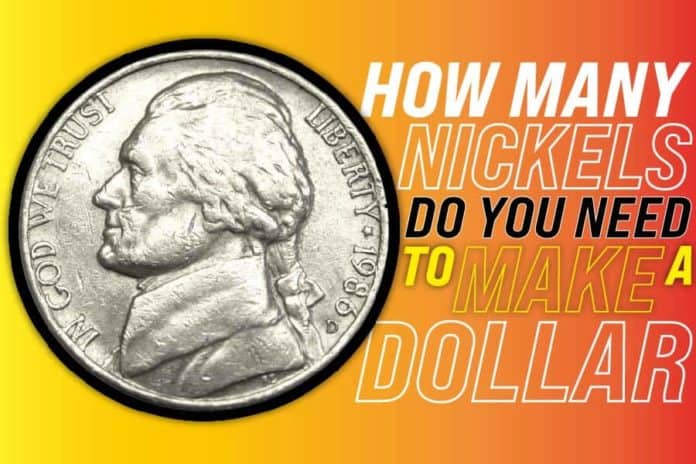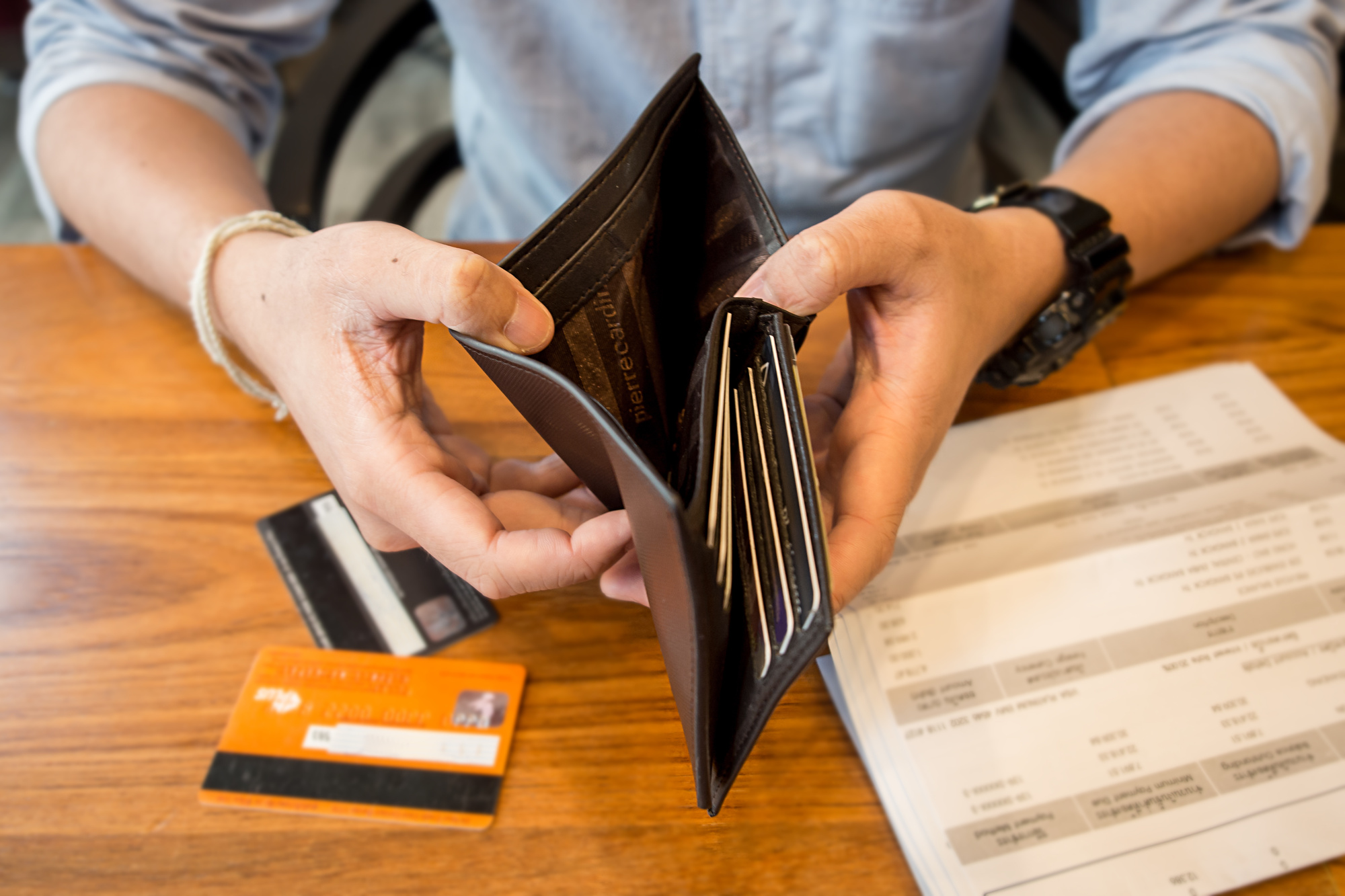Money is money! It doesn’t matter if it’s one dollar or a cent. Remove a cent from a million dollars, and it will no longer be complete.
So, every penny is important. Nickels are, even though many Americans don’t feel comfortable using them.
We have four unique coins in circulation: nickels, penny, dime, and quarter.
Each of these coins differs. They differ in physical traits and worth.
Now, our focus is on nickels. If you have a bunch of these coins lying around, it’s crucial to know much would make up a dollar.
Let’s respond to the question below.
How many nickels do you need to make a dollar?
A nickel is far less than a dollar. Now, how many would make up a dollar? That’s the question.
To determine how many nickels make a dollar, we need to know the value of a nickel.
A nickel’s value is still 5 cents today. And we all know that 100 cents equal a dollar. Therefore, 20 nickels make a dollar.
Here’s the rough math.
If 1 nickel equals 5 cents
X nickels equal 100 cents (1 dollar)
When you cross multiply, you’ll have this.
5cents multiplied by x = 100 multiplied by 1
X = 100/5 = 20 nickels.
Continue reading as we have more information on this topic to share.
Do Nickels Have High Value Than Other Coins?
Two things separate nickels from other coins, such as quarter, dime, and penny. The first is their value, while the second is their size.
A nickel’s value is 5 cents. A penny is 1 cent; a dime is 10 cents, while a quarter is 25 cents.
With this revelation, you can see that quarter boasts the highest value. Five nickels make a quarter.
A quarter’s value is 0.25 US dollars. It’s a quarter of a dollar.
Size-wise, the quarter coin is the biggest, followed by nickel coins. Next is the penny, while the dime is the smallest among the four coins.
Is Nickel Bigger Than Other Coins?
Nickel is bigger than dime and penny, not quarter. The quarter is the biggest coin.
However, the nickel coin is the thickest among all four coins, while the dime is the tiniest.
You can also differential all four coins by their edges. Some have smooth edges, and others have rough or ridged edges.
Coins with smooth edges include penny and nickel. Both coins are round and smooth throughout.
Dime and quarter are the opposite. Both coins boast ridged edges, and that hasn’t changed since inception.
A Handy Tip: Quarter’s obverse (head) bears the face of the first US President, George Washington. But on the reverse, the design has changed multiple times after 1998.
Nickels Obverse And Reverse Design
The obverse and reverse designs of a coin refer to the front and tail, respectively. The obverse designs usually bear the head of a prominent individual in US history, while the reverse does the same.
Sometimes, the reverse might sport a landmark structure or something that defines the country’s rich history.
So, what’s on the nickel coin?
We earlier established that nickel coins have smooth edges. Their designs (obverse and reverse) are also eye-catching.
On the obverse of the five-cent coin, nickel, you’ll find the portrait (head) of Thomas Jefferson. He was the United State’s third president and drafted the Declaration of Independence.
On the reverse (tail) of the nickel lies a landmark building called “Monticello,” which belongs to Thomas Jefferson.
The Monticello was the US third president’s home, situated in Virginia. Thomas Jefferson designed the building by himself.
A Handy Tip: Thomas Jefferson didn’t go to school to study architecture. He was surprisingly a self-taught architect.
Over 700 of Jefferson’s notes and various drawings on architectural subjects have since been confirmed. And more than half of that relates to the former president’s mansion, Monticello, located near Charlottesville, Virginia.
How long has Thomas Jefferson been on the nickel coins’ observe (head) and reverse (tail)? He’s been there since 1938. But there were some slight changes to the coin’s obverse in 2005. It was the first change ever made on the coin since 1938.
What Are Nickel Coins Made Of?
The name “nickel” will make you believe that the coin is made of 100% nickel. But that’s not the case.
It does contain nickel, quite alright. And it’s the only coin bearing the name of one of its metal constituents.
Shockingly, nickel isn’t the only metal in the coin. It only contains 25 percent nickel. The rest of the nickel coin you see comprises copper.
So, nickel comprises cupronickel (75 percent copper and 25 percent nickel).
A Handy Tip: Nickel coins comprised 35 percent silver between 1942 and 1945. The decision to switch to silver came because of the high demand for industrial nickel during the Second World War.
So, the five-cent coins were produced with 35 percent pure silver while the war lasted.
Properties That Makes Nickels Constituents A Wise Choice
We know that copper and nickel are the two metal constituents in the five-cent coin. But the question is what makes a combination of both metals a success?
#1: Corrosion-resistant:
The copper-nickel combination doesn’t tarnish. The five-cent coin can retain its shine for a long time.
Imagine what would have happened if the five-cent coin weren’t corrosion-resistant. People wouldn’t have been so bold to store so many coins for an extended period back then.
#2: Antibacterial properties:
The five-cent coin’s copper-nickel composition makes it more sanitary. How? Copper’s antibacterial properties are well-documented.
So, the surface of the five-cent coin can eliminate harmful viruses, bacteria, and fungi with such high efficacy.
#3: Recyclability:
The world needs more of materials that are recyclable. There are just too many non-biodegradables lying around.
What sets the five-cent coins’ copper-nickel apart is that they’re 100 percent recyclable. And it is possible to mint the coin from recycled metals.
#4: Allergy risk:
There are tons of people worldwide exposed to copper-nickel coins, with no allergic reaction. Touch dermatitis risk with copper-nickel coins is quite small.
#5: Durability:
If you wondered why the copper-nickel combo got picked for the 1 and 2 euro denomination, you have found the answer – durability.
Unlike other metals, coins made from copper and nickel can last for over three decades.
Conclusion
How many nickels do you need to make a dollar? You can see how we responded to the question with a detailed calculation. Let’s also explain it here.
A nickel is 5 cents. The coin itself is regarded as a five-cent coin ($0.05).
As the name suggests, the five-cent coin doesn’t contain 100 percent nickel metal. It has only 25 percent of nickel. The rest 75 percent is copper.
So, the five-cent coin consists of a combination of copper and nickel. And it’s durable, recyclable, corrosion-resistant, and boasts impressive antibacterial properties.
This coin can last for decades and even retain its shine for long. Finally, we stated that you need 20 nickels to make a dollar.












